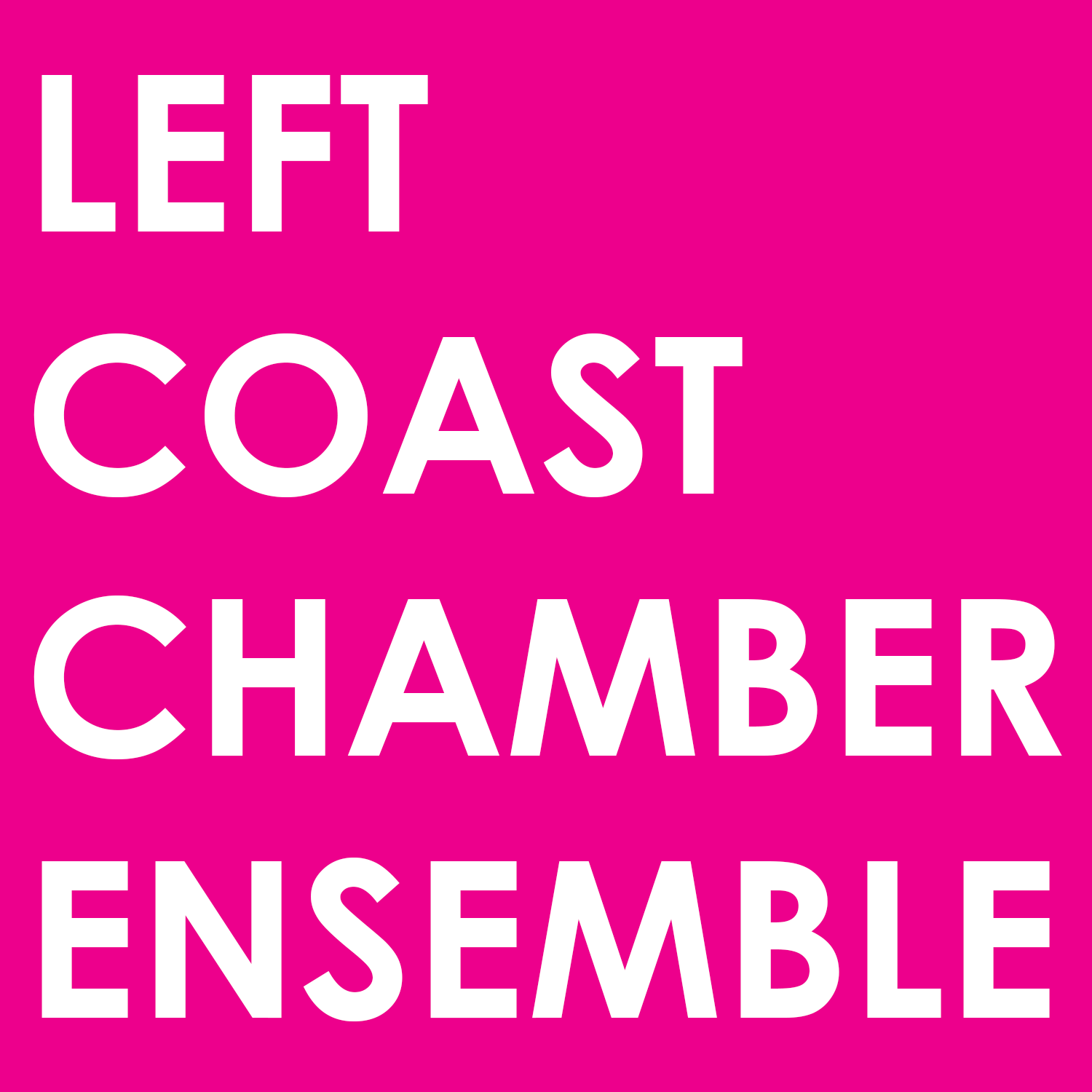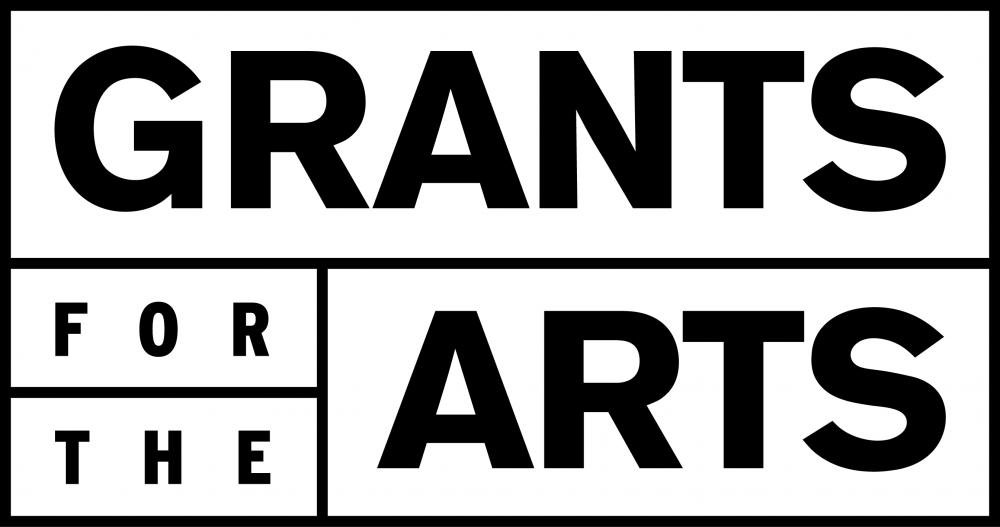Sheltering Music - A Virtual Concert!
Live from the Doug Adams Gallery at the Graduate Theological Union
Khachaturian - Sonata-Song for Viola Solo
Elliott Carter – Steep Steps
Robert Schumann - Bird as a Prophet
Peteris Vasks - Landscape with Birds
Veronika Krausas – Cloisonne
Jörg Widmann - Selections from 24 Duos for Violin and Cello
Michel Blavet - Gigue en Rondeau
Ruth Crawford Seeger - Selections from Diaphonic Suite
Beethoven - Piano Sonata, Op. 78
Sheltering Music is Left Coast's final subscription concert of our season. In the interest of health and safety, the musicians scheduled to play this concert have curated an updated program of solos and duets we can practice and rehearse at home. We’re excited about these pieces picked for you by our players. Learn more in our Letter from Artistic Director Anna Presler.
Artists
Anna Presler, violin
Phyllis Kamrin, viola
Leighton Fong, cello
Eric Zivian, piano
Michel Taddei, bass
Stacey Pelinka, flute
Jerome Simas, clarinet
ONLINE EVENT:
Monday, June 1, 2020, 7:30 PM
We’re excited to broadcast to you live! Thank you to our hosts: the Doug Adams Gallery at the GTU’s Center for Arts and Religion.
FREE!
Program Notes:
Aram Khachaturian
Sonata-Song for Solo Viola (1976)
by Phyllis Kamrin
Aram Khachaturian was born in 1903 in Tbilisi, Georgia (Russia) to an Armenian family. As a child he loved the folk music he would hear on the streets of Tbilisi but didn’t take formal music lessons until he was 19 years old and had moved to Moscow with his brother. In 1929, he transferred to the Moscow Conservatory where he studied under Nikolai Myaskovsky. Due to his humble roots, he embraced socialist ideology and, with his fellow colleagues, Prokofieff, and Shostakovich, thrived under Lenin’s socialism. Under Stalin however, he and these others were denounced as being too “formalistic” and “antipeople” and Khachaturian entered a depression that stayed with him for several years until composing his last big ballet work, “Spartacus” in the 1950s.
While Khachaturian was a classically trained composer of the Soviet school, his style is firmly rooted in the folk music of Armenia, Georgia, Azerbaijan, as well as the Middle East. This Sonata-Song inhabits the shorter forms of these ethnic worlds and is very fragmented and cadenza-like in feel, starting with a rhythmic section that wends its way through various technical and musical challenges in an almost off the cuff, improvised style. He also uses irregular rhythmic patterns with repeated notes and small repeated ornamental figures to build tension and create transitions.
The use of the interval of a second is a key feature of Khachaturian and also of this piece. According to the composer himself, “these seconds come from the numerous sounds of folk instruments which I had heard as a child: sazandartar (a family of longnecked lutes), gyamancha (a traditional, bowed string instrument) and drum (an Armenian traditional instrument played with the hands or a stick).”
This piece, composed in 1976, is the last in in a trilogy of unaccompanied solo sonatas, the first for violin, the second for cello and the final (in a nod to Shostakovich’s final composition written in 1975) for viola. This piece is also the last composition that Khachaturian wrote. He died in 1978 in Moscow and is buried in Armenia.
Elliott Carter
Steep Steps (2001)
Notes by the composer
Steep Steps was written for the greatly admired clarinetist and friend, Virgil Blackwell, during the summer of 2001. Its title comes from the fact that, unlike the other woodwind instruments, the clarinet overblows at the twelfth, a large interval that forms the basis of much of this composition.
Robert Schumann
Vogel als Prophet, from Waldszenen Op. 40 (1849)
by Scott Foglesong
Robert Schumann was at his best when channeling his surging emotional currents through his compositions, and nowhere does he do that more than in his works for solo piano. Personal, intimate, and confessional, they can seem wellnigh autobiographical or even psychotherapeutic. In the Waldszenen of 1849, Schumann allowed his imagination free rein in a series of contemplations about that favorite Romantic theme, the forest—or, to be more precise, the woods as metaphor for our internal selves and our relationship with the larger world. The individual pieces may be short and made up of thematic fragments, but they pack a bevy of associations and resonances. This is no humdrum trip to the woods, in other words: it is a journey into the psyche, comforting and beautiful on the one hand, unknowable and mysterious on the other.
The nine Waldszenen, written over a mere three days, explore Romantic forest symbolism at its most evocative, from the sounds of the hunting horn or the twittering of birds, while often edging into chaotic disruptions, formal ambiguities, and seeming nonsequiturs. The seventh-place Vogel als Prophet (Bird as Prophet) encapsulates the essence of Schumann’s thoughts. To describe it as a mere imitation of birdsong (although Schumann does a pretty good job with that) is to ignore the apparent discongruity of the middle section, a gravely lovely chorale-like affair reminiscent of the lyric musings of Dichterliebe. Thus human consciousness is juxtaposed with a fluttering aural fantasy, shunning either explanation or justification.
Peteris Vasks
Landscape with Birds (1980)
by Stacey Pelinka
Peteris Vasks is a Latvian composer born in 1946. He suffered as an artist under the cultural oppression of the Soviet Union, but has had much success and recognition in the Post-Soviet era. His music shares roots with music from Finland and other Baltic countries, rather than leaning toward Russian music. Within the framework of his contemporary musical language, Vasks incorporates many programmatic elements: he cares deeply about environmental issues and many of his pieces explore the relationship (both positive and destructive) between humans and nature; he incorporates autobiographical elements into his music; and he uses many themes from Latvian folk music. Landscape with Birds, written in 1984, uses extreme ranges and dynamics to reflect landscape forms. Singing and playing are used to produce a slightly unstable, fragile sound; there is no regular pulse or meter, lending the music a sense of improvisation. Birdsong, laced throughout the piece, can be understood to be nature in its pristine state or a human longing for freedom. The structure of the piece is a free-form arc from fragile peace, through extreme agitation, back to an altered peace.
Veronika Krausas
Cloisonné (2005)
Notes by the composer
Cloisonner (Fr. verb): to divide up, partition, to compartmentalize.
This piece for solo double bass echoes images in Nana Tchitchoua’s film Movement Cloisonné (2002) of contained and precise movement in Georgian ballet dancers, time mechanisms, writing in a journal, and the eponymous title of the work, cloisonné (ancient technique for decorating metalwork objects, with intricate metal designs containing different enamels and gems). The regularity of the watch mechanism is reflected in the continuous pulse of the music. The containment of the enamel in cloisonné is reflected by the compound melody always having one open string acting as a boundary.
Jörg Widmann
24 Duos for Violin and Cello (2008)
by Anna Presler
David Allen’s New York Times article about Jörg Widmann caught my attention in March. He wrote:
One of the most performed orchestral works written this century is a piece by Jörg Widmann. Commissioned by Mariss Jansons and the Bavarian Radio Symphony Orchestra and given its premiere in 2008, “Con Brio” has had over 200 performances. Before coronavirus-related cancellations, it was scheduled to be played 63 times by 28 orchestras this season alone.
So what’s the appeal? Like much of Mr. Widmann’s work, “Con Brio” aims to give the past a fresh spin, so that those who love old music and those who love the new can both enjoy it. Using basically the same instrumentation as Beethoven’s Seventh and Eighth Symphonies, “Con Brio” is playful and cheeky, distorted and provocative — yet somehow familiar, as if it is pulling on the mystic chords of our musical memories.
Reading this, I was so intrigued that I hunted on my shelves for 24 Duos for Violin and Cello, written, like “Con Brio,” in 2008. It is a piece of Widman’s that has been gathering dust in the music room for years, ordered from some sheet music store, but never played. Once I started it, I found that I love just about every note. Although the composer prefers that all the movements be played cyclically, in order, he says they can be performed individually as well. Eventually I do hope to play all the movements, but for the time being, I’m just happy to be able to play something by this remarkable composer for our Left Coast audience.
Leighton and I have picked 4 of the 24 Duos to play for you. The movement marked Tempo Giusto (the very first piece in Volume I of the Duos) starts out impetuously. In the first few phrases the music keeps accelerating; half way through it finds its balance and settles down. Alla breve, ma pesante is the second piece in Volume I, and answers to Tempo giusto. It is robust, steady, and vertical, and it so much fun to play. We follow with Four Verses of Homesickness, a distant chorale, deeply sentimental, astonishingly tender, and never saccharine. The last movement we’ll play is an elegant Bavarian waltz, with all kinds of ungainly and unexpected twists mixed in. In the preface to the Duos, Widman describes the evolution of his approach to this economical but powerful pairing of instruments:
My initial intention was to write a few small duos for violin and violoncello. I could not then have imagined that this would ultimately produce 24 duos created in elated compositional excess. The result is two volumes containing 13 and 11 duos respectively.
For a while I retained a great respect for the vulnerability and reductive nature of this duo constellation, and my tonal powers of imagination remained curiously inhibited and one-dimensional. I was somehow only able to produce a small number of scattered and tonally extremely brittle and sparse tonal constellations. I then decided to make these unprotected and naked two-part structures deliberately audible in certain movements. In almost all remaining pieces, I extended the harmony to form a three –– and frequently even four-part structure. The substantial number of the resulting double stops represents a particular technical challenge for both instruments, but it is precisely this almost continuously used technique which produces the specific tonal quality of the work.
Later he adds:
Violin and violoncello simultaneously form a comparable and incomparable pair. In these duos, both instruments are inseparably dependent on one another and cannot exist without each other. It is also essential to visualize the predominant compositional technique in the literal sense of “note against note” as strictly contrapuntal. Everything is interwoven, and everything one instrument does has consequences for the other. They attract each other, reject each other, love and hate each other, sometimes throw balls back and forth in play and then suddenly with an almost destructive intent. The playful elements of the work therefore always remain serious and the serious elements playful. Tricks and effects are totally absent: I have concentrated on the bare and essential musical substance right down to the most miniature phrases.
Michel Blavet
Gigue en Rondeau (1744)
by Stacey Pelinka
Gigue en Rondeau is from the Premier Recueil for two flutes. It was the style of the time to publish collections of original and arranged works in a “Recueil” (collection). Blavet’s three collections of duets for two flutes were most likely later works, and contain arrangements of popular tunes of the time as well as pieces by Couperin, Rameau, and Handel. This gigue, one of very few solo works in the Recueil, is titled Gigue en Rondeau de Blavet, which means it’s an original composition. It has a very simple structure, a chromatically descending line with ornamentation, which is haunting in its melancholic simplicity. The phrase structure is irregular, typical of the French style, and the last phrase goes on about 3 beats too long, something I find very charming.
Ruth Crawford Seeger
Diaphonic Suite No. 1 (1930)
by Scott Foglesong
Ruth Crawford Seeger (née Ruth Porter Crawford) remains a relatively unknown voice in 20th century American music. Part of that has to do with the brevity of her active compositional career: she married Charles Seeger in 1931 and focused her energies on a family that was eventually to include seven children. But another important factor was the Great Depression of the 1930s, during which she came to doubt the validity of modernist music aimed at a small and elite audience, as opposed to everyday music for everyday living. As a result, from the mid-1930s onward she dedicated herself to collecting folk songs and teaching music in private schools.
In her heyday she was a modernist à la Henry Cowell, which is to say not particularly concerned with European models à la Aaron Copland. Her works of the 1920s were often shot through with philosophical or even theosophical threads, but upon meeting and studying with Charles Seeger in 1929 she began exploring the hierarchy of consonance/dissonance and experimented with rhythm.
Her four Diaphonic Suites date from 1930 and 1931, nearly the end of her active compositional career, and as such represent her ultra-modernist thinking at its most advanced. Written for just one or two instruments, they are a series of two-part invention-like works, explorations of counterpoint divorced from traditional tonal or rhythmic considerations.
Ludwig van Beethoven
Piano Sonata No. 24 in F-Sharp Major, Op. 78 (1809)
by Scott Foglesong
Everybody likes a good mystery, especially the unsolvable type for which all answers are equally (im)plausible. Shakespeare’s Dark Lady. Amelia Earhardt. The Grassy Knoll. Music history offers some delectably persistent mysteries. The disease that killed Mozart. The ‘enigma’ of Elgar’s Enigma Variations. A letter, found among Beethoven’s papers after his death and mum about both year and recipient, triggered a particularly toothsome imbroglio that has preoccupied biographical treasure hunters ever since. “My angel, my all, my very self,” it begins. “My thoughts go out to you, my Immortal Beloved,” it continues. It’s indubitably a love letter. But nobody knows who the Immortal Beloved actually was.
Naturally, everybody has an opinion. Beethoven’s factotum Anton Schindler declared it to be Giuletta Guicciardi of Moonlight Sonata fame and in the absence of any actual proof salted the letter with a few extra dates as ‘evidence.’ Eminent Beethoven biographer Alexander Wheelock Thayer dismissed Schindler’s nonsense but tossed his own random dart at the target by way of Therese von Brunsvik, one of a pair of sisters (the other being Josephine) who were amongst Beethoven’s circle of friends—but Thayer also stooped to fudging the (very limited) data. For two centuries, scholars and flim-flammers alike have proposed a bevy of candidates, basing their claims on research, wishful thinking, or downright forgery. Modern Beethoven biographer Maynard Solomon makes a good case for Antonie Brentano, a well-to-do young woman from a distinguished Viennese family.
When all is said and done, the thing’s a silly sideshow, save how it might intersect with the music itself. That brings us to Piano Sonata No. 24 in F-sharp Major, Op. 78, which Beethoven dedicated to Thayer’s candidate Therese von Brunsvik. That she was a friend is clear enough, and Beethoven did have a habit of dedicating works to ladies who caught his fancy. But she wasn’t the Immortal Beloved. At least not this week.
Op. 78 is Beethoven’s only piano sonata in F-sharp major. That’s surprising. One would think that Beethoven, crackerjack pianist that he was, would show the same preference for the higher sharp and flat keys as did later Romantics such as Chopin and Liszt. F-sharp might be ‘difficult’ for reading, but it conforms naturally to the shape of the hand and lends itself well to flowing passagework. Thus in Beethoven’s choice of key we find a guide to the sonata’s character: it is a graceful work, quite unlike the heaven-storming Op. 57 ‘Appassionata’ sonata that precedes it in the catalog. There’s an essay-like feel to this brief, relatively unassuming and often overlooked sonata, surely one of Beethoven’s most ingratiating creations.
The first movement is based on a melodic ‘cell’ that is heard as the introductory Adagio cantabile; despite its lyricism, the Allegro ma non troppo proper is tautly constructed, manifesting the intense compression that would come to character Beethoven’s ‘late’ style. The second-place Allegro vivace, on the other hand, is whimsical, almost droll, its main theme subtly referencing ‘Hail, Britannia!’ and the whole bubbling along its way with nary a dark stretch in sight.
Download the Sheltering Music press release.









